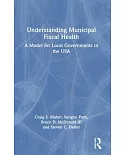Caught up in the costly Napoleonic wars, Austria went into sovereign default in 1811. Five years later, the public authorities founded a national bank to be financed and run by private
shareholders, the idea being that an independent bank would help rebuild trust in money. During the two hundred years that followed, the Oesterreichische Nationalbank grew from the treasury’s
banker-of-choice into a central bank, and from a private stock corporation into a public institution. Yet the challenges facing today’s Nationalbank are a surprising echo of the past: How can
it provide stable money? How far must central bank independence go? How does monetary policy making work in a multinational monetary union? Stretching from the Nationalbank’s predecessor, the
Wiener Stadtbanco, to Austria’s integration into the European Union today, this engaging book provides the first extensive overview of Austria’s monetary history.





















